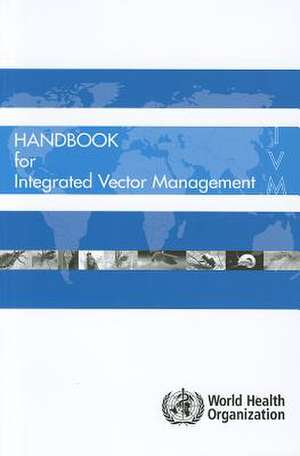Handbook for Integrated Vector Management
Editat de World Health Organizationen Limba Engleză Paperback – 27 aug 2012
Preț: 157.83 lei
Preț vechi: 166.13 lei
-5% Nou
Puncte Express: 237
Preț estimativ în valută:
30.21€ • 31.29$ • 25.21£
30.21€ • 31.29$ • 25.21£
Carte indisponibilă temporar
Doresc să fiu notificat când acest titlu va fi disponibil:
Se trimite...
Preluare comenzi: 021 569.72.76
Specificații
ISBN-13: 9789241502801
ISBN-10: 9241502800
Pagini: 68
Dimensiuni: 155 x 234 x 5 mm
Greutate: 0.16 kg
Editura: World Health Organization
ISBN-10: 9241502800
Pagini: 68
Dimensiuni: 155 x 234 x 5 mm
Greutate: 0.16 kg
Editura: World Health Organization
